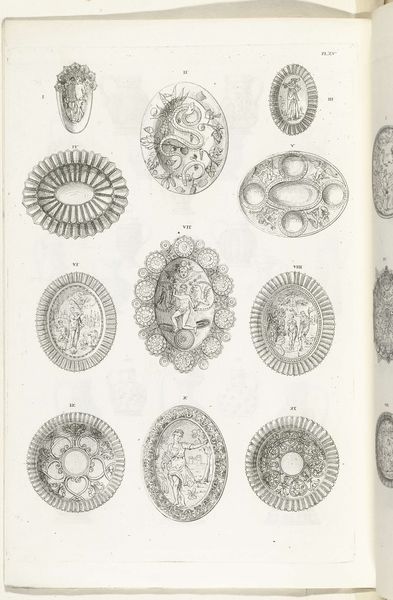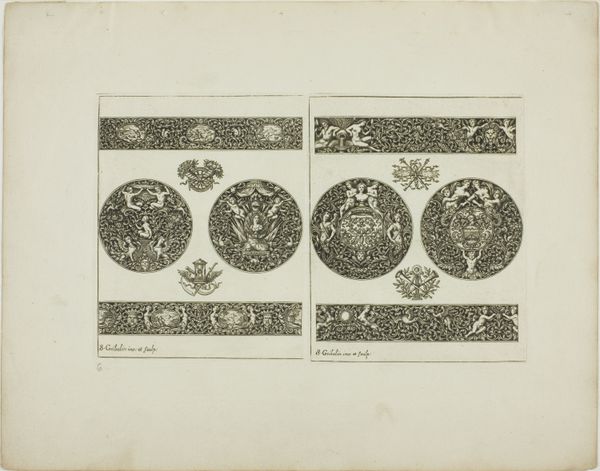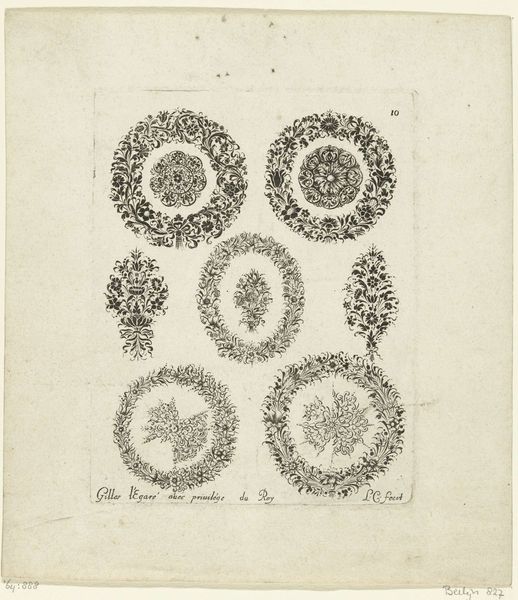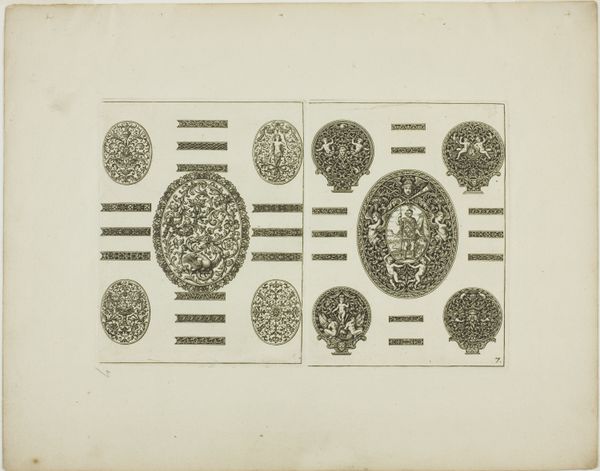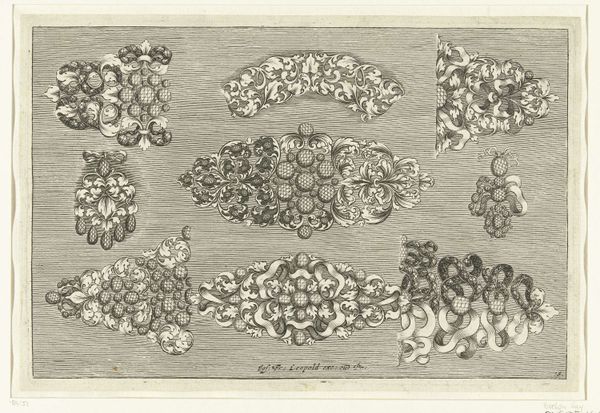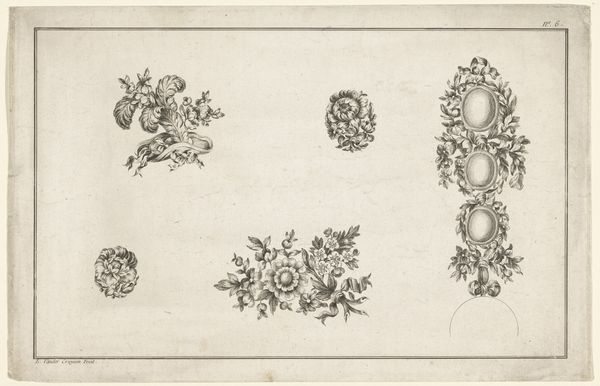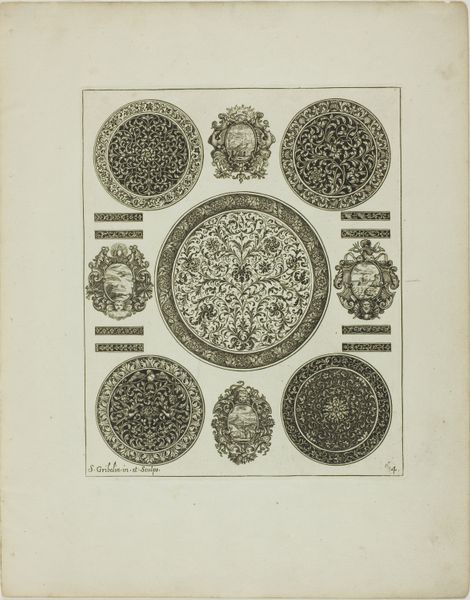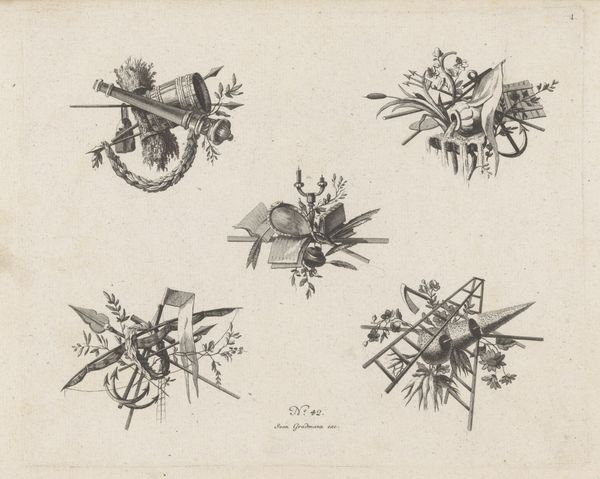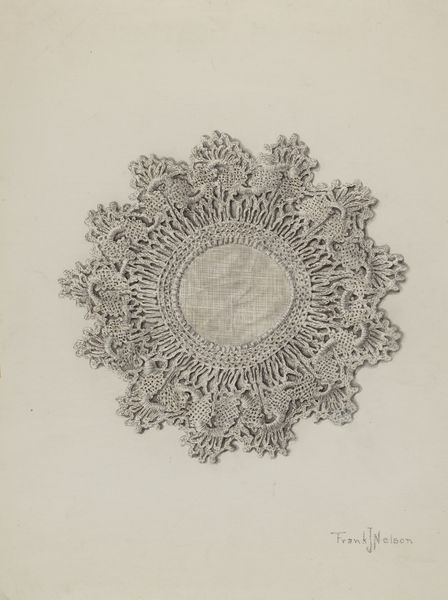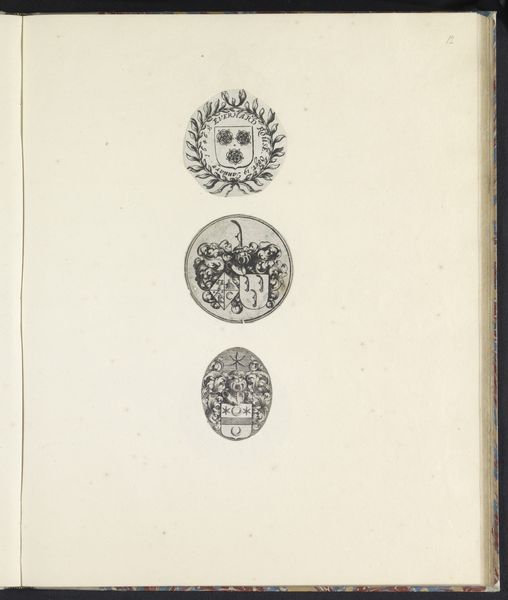
#
pencil drawn
#
light pencil work
#
pen sketch
#
pencil sketch
#
old engraving style
#
pen-ink sketch
#
pen work
#
sketchbook drawing
#
pencil work
#
sketchbook art
Dimensions: height 212 mm, width 159 mm
Copyright: Rijks Museum: Open Domain
Curator: This image presents us with "Borden, plaat XVI," created between 1827 and 1829 by Charles Onghena. My immediate impression is how detailed the various sketches of dishes are; almost like a page torn straight from an engraver's sketchbook. Editor: And a working document it seems to be, material wise. These are simple pencil and ink sketches on paper. Nothing precious, designed purely to convey information to the craftsmen who would eventually realize these designs in more costly materials for elite tables, correct? Curator: Precisely. Think about the context – these are the dawn hours of industrialization. A growing middle class had new access to previously exclusive markets. Craftsmanship became less about unique creation and more about systematized, widespread replication of patterns for plates, tea sets and fine porcelains. Editor: So, Onghena becomes less the "artist" and more the progenitor of forms and products that will be disseminated and consumed widely. I'm curious, are there discernible cultural motifs repeated throughout the set of sketches? Curator: Look at the recurring classical scenes – the equestrian figures, what seems like Dionysian revelry, mythological beasts. All imagery geared towards lending an air of historical prestige and high culture to these objects. They invoke the courts and nobility that middle-class society so earnestly strived to mimic and then commodify. Editor: Therefore, pieces like this reveal the fascinating interplay between production, distribution, and aspiration, reflecting societal shifts through objects and their availability to new groups. It’s no longer about artistry but manufacturing, making Onghena part of an economic transformation. Curator: Absolutely. By drawing attention to the function and reproducibility of these sketches, Onghena helps reveal art’s democratic transition within a broader cultural shift. Editor: This artwork also acts as an interesting record that helps contextualize social ambitions of its day. It challenges the assumption of uniqueness as it unveils repetitive patterns used in different forms. Curator: Yes, an artwork like this asks the viewer to consider historical accessibility as an essential consideration when looking at similar artworks from its era. Editor: It serves as a bridge between social dynamics and the industrial process behind seemingly decorative forms. A fresh view. Thank you.
Comments
No comments
Be the first to comment and join the conversation on the ultimate creative platform.
